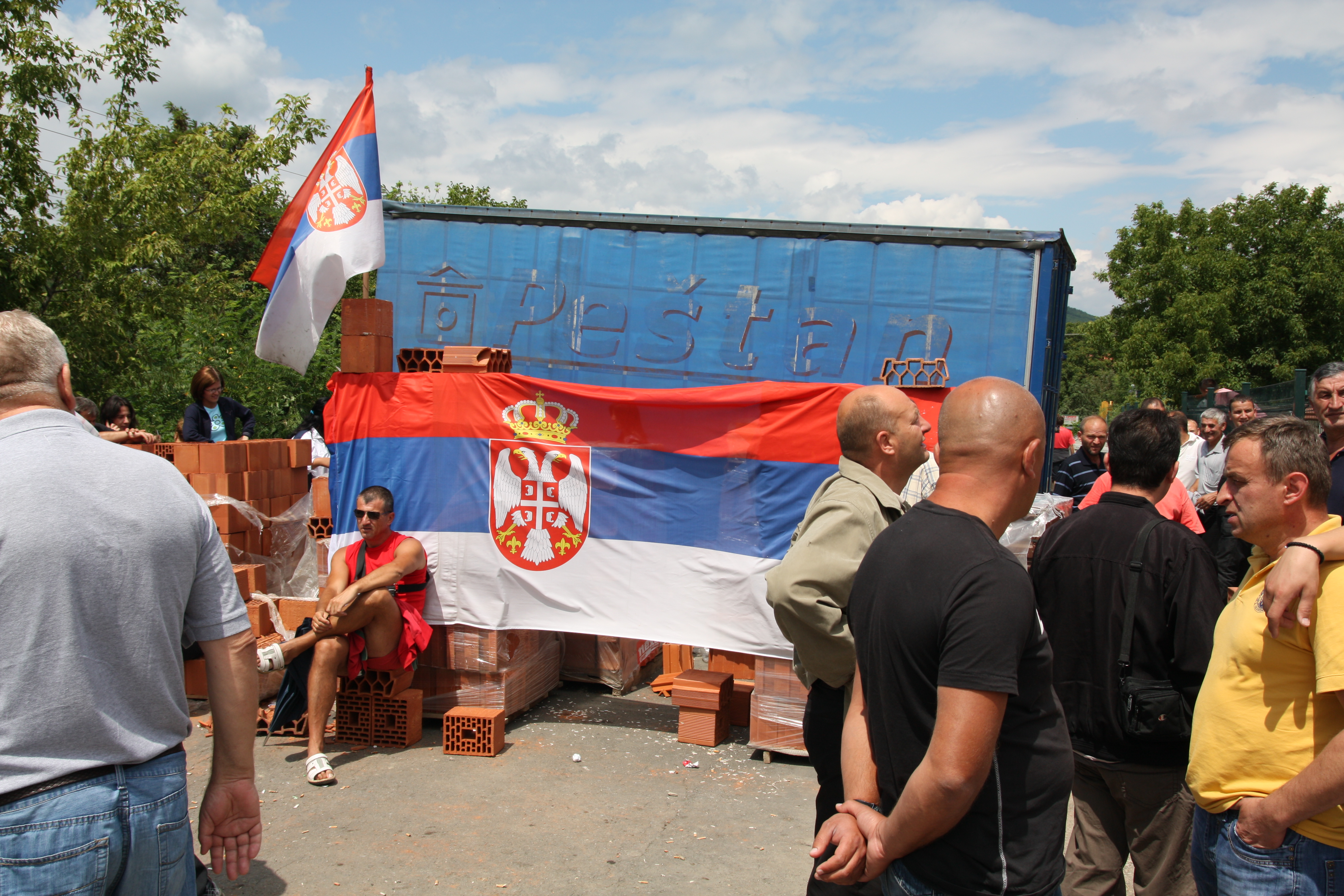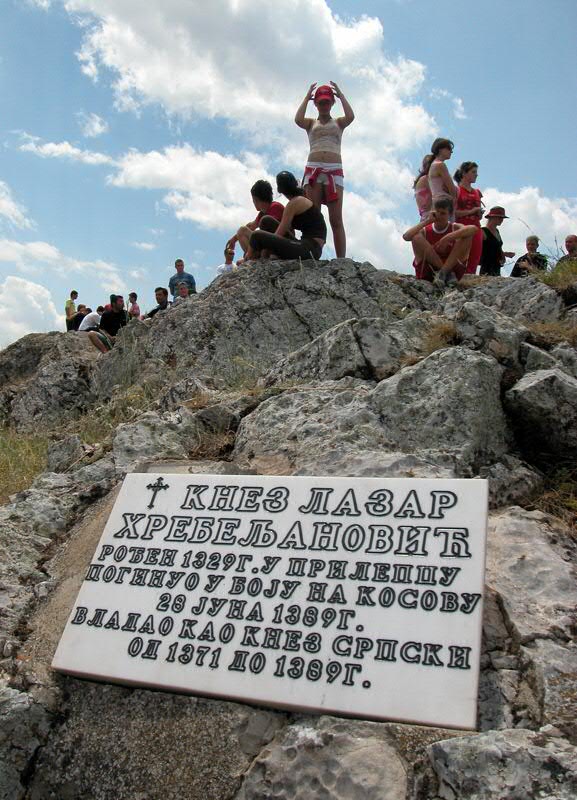|
Musić Noble Family
The Musić ( sr-cyr, Мусић, Musići / Мусићи) was a Serbian noble house that served the Serbian Empire (1345–1371), and during its fall (1371–1389) it served Tsar Lazar's Serbia. The eponymous founder was ''čelnik'' Musa, who married Dragana Hrebeljanović, the sister of Tsar Lazar (r. 1371-1389). Stefan and Lazar Musić, the sons of Musa, held a region of roughly modern Raška municipality and north Kosovo. The brothers died fighting the Ottoman Empire in the Battle of Kosovo (1389). History They held a region of north Kosovo, around Ibar with the seat in Zvečan. Musa was given the estate by Emperor Stefan Uroš V (r. 1355-1371). They relocated their seat to Brvenik on the Ibar, due to the swapping of fortified cities with Vojislav Vojinović (around 1355-1363). Their province included the Kopaonik area (with mines), in the middle of the Ibar and Lab, and stretched from the Radočelo and Brvenička župa in the northwest, to the Brvenica tributary ... [...More Info...] [...Related Items...] OR: [Wikipedia] [Google] [Baidu] |
North Kosovo
North Kosovo ( sr, Северно Косово, Severno Kosovo; sq, Kosova Veriore), also known as the Ibar Kolašin ( sr, Ибарски Колашин, Ibarski Kolašin; sq, Koloshini i Ibrit or ''Kollashini i Ibrit''; earlier ''Old Kolašin'', sr, Стари Колашин, Stari Kolašin; sq, Koloshini i Vjetër or ''Kollashini i Vjetër''), is a region in the northern part of Kosovo, generally understood as a group of four municipalities with ethnic Kosovo Serbs majority: North Mitrovica, Leposavić, Zvečan and Zubin Potok. Prior to the 2013 Brussels Agreement, the region functioned independently from the institutions in Kosovo, as they refused to acknowledge and recognize the independence of Kosovo, declared in 2008. The Government of Kosovo opposed any kind of parallel government for Serbs in this region. However, the parallel structures were all abolished by the Brussels Agreement, signed between the governments of Kosovo and Serbia. Both governments agreed upon ... [...More Info...] [...Related Items...] OR: [Wikipedia] [Google] [Baidu] |
Užice
Užice ( sr-cyr, Ужице, ) is a city and the administrative centre of the Zlatibor District in western Serbia. It is located on the banks of the river Đetinja. According to the 2011 census, the city proper has a population of 59,747. The City municipality of Užice ( sr-cyrl, Градска општина Ужице, Gradska opština Užice) is one of two city municipalities (with the City municipality of Sevojno) which constitute the City of Užice. According to the 2011 census results, the municipality has 70,939 inhabitants. History Ancient era The region surrounding Užice was settled by Illyrians, specifically the Parthini and the Celtic-influenced Autariatae tribes. Their tombs are found throughout the region. In the 3rd century BC, the Scordisci featured prominently after the Gallic invasion of the Balkans. The region was conquered by the Roman Empire in 168 BC, and was organized into the province of Illyricum in 32–27 BC and, after 10 AD, the province of Dalmat ... [...More Info...] [...Related Items...] OR: [Wikipedia] [Google] [Baidu] |
Nikola Altomanović
Nikola Altomanović ( sr-Cyrl, Никола Алтомановић; died after 1395) was a 14th-century Serbian župan of the House of Vojinović. He ruled the areas from Rudnik, over Polimlje, Podrinje, east Herzegovina with Trebinje, reaching as far as Konavle and Dračevica, neighboring the Republic of Dubrovnik. He was defeated and blinded in Užice ( fortress Užice) in 1373 by a coalition of his Serbian and Bosnian royals neighbors supported by the king of Hungary. Biography His father was Altoman Vojinović, a vojvod in Zeta. In 1363, Nikola's uncle Vojislav Vojinović was killed and Nikola used his uncle's death to gain a piece of his land. He allied himself with Lazar Hrebeljanović against King Vukašin Mrnjavčević and they managed to persuade Uroš to support them. However, after Lazar pulled out at the critical moment they were defeated at Kosovo in 1369. In 1373, a military alliance against Nikola was created, which included Bosnian Ban Tvrtko I Kotromani� ... [...More Info...] [...Related Items...] OR: [Wikipedia] [Google] [Baidu] |
Lazar Of Serbia
Lazar Hrebeljanović ( sr-cyr, Лазар Хребељановић; ca. 1329 – 15 June 1389) was a medieval Serbian ruler who created the largest and most powerful state on the territory of the disintegrated Serbian Empire. Lazar's state, referred to by historians as Moravian Serbia, comprised the basins of the Great Morava, West Morava, and South Morava rivers. Lazar ruled Moravian Serbia from 1373 until his death in 1389. He sought to resurrect the Serbian Empire and place himself at its helm, claiming to be the direct successor of the Nemanjić dynasty, which went extinct in 1371 after ruling over Serbia for two centuries. Lazar's programme had the full support of the Serbian Orthodox Church, but the Serbian nobility did not recognize him as their supreme ruler. He is often referred to as Tsar Lazar Hrebeljanović ( sr, Цар Лазар Хребељановић / ''Car Lazar Hrebeljanović''); however, he only held the title of prince ( sr, link=no, кнез / '' knez'') ... [...More Info...] [...Related Items...] OR: [Wikipedia] [Google] [Baidu] |
Brvenica (river)
Brvenica is a South Slavic toponym. It may refer to: *Brvenica Municipality, North Macedonia **Brvenica, North Macedonia, village which is home to the municipal seat * Brvenica, Raška, a village in Serbia See also *Brvenik Brvenik is a village in the municipality of Raška, Serbia Serbia (, ; Serbian language, Serbian: , , ), officially the Republic of Serbia (Serbian language, Serbian: , , ), is a landlocked country in Southeast Europe, Southeastern and Ce ..., a village in Serbia * Brvenik Naselje, a village in Serbia {{geodis ... [...More Info...] [...Related Items...] OR: [Wikipedia] [Google] [Baidu] |
Radočelo
Radočelo (Serbian Cyrillic: Радочело) is a mountain in central Serbia, between towns of Ivanjica and Raška. Its highest peak ''Krivača'' has an elevation of 1,643 meters above sea level. Studenica monastery The Studenica Monastery ( sr, / ), ) is a 12th-century Serbian Orthodox monastery situated southwest of Kraljevo and east of Ivanjica, in central Serbia. It is one of the largest and richest Serb Orthodox monasteries. Stefan Nemanja, the foun ... is located on northeastern slopes of the mountain. References Mountains of Serbia {{Serbia-geo-stub ... [...More Info...] [...Related Items...] OR: [Wikipedia] [Google] [Baidu] |
Lab River
The Lab ( sr-Cyrl, Лаб) or Llap ( sq, Llapi), is a river in the north-eastern part of Kosovo. The long right tributary to the Sitnica river, it is the main river in the Llap (region) depression. Near its origin are remains of medieval palace of Serbian king Milutin (1282-1321) called Vrhlab (Serbian Cyrillic: , which means ''origin of the Lab''). Name etymology The etymology of the river's name is derived from a pre-Slavic form ''Alb'' that underwent linguistic metathesis within Slavic giving the final form as ''Lab''.Županić, Niko (1936). Značenje barvnega atributa v imeny ,,Crvena Hrvatska’’'. Etnolog. p. 362. "Na ozemlju Dukljaninovic Bete Hrvatske se je namreč nahajalo mesto Lab, a stara srbska država Raša se je po njem razprostirala ad Lapiam et Lap, kar gotovo meri na župo in reko Lab, pritok Sitnice na Kosovem polju. Tu je menda nastopila znana slovanska likvidna metateza alb > lab, ali je treba pripomniti, da so ti koreni predslovanski, morda celo predin ... [...More Info...] [...Related Items...] OR: [Wikipedia] [Google] [Baidu] |
Kopaonik
Kopaonik ( sr-cyr, Копаоник, ; sq, Kopaoniku) is a mountain range located in Serbia and Kosovo. The highest point is the Pančić's Peak with . The central part of the Kopaonik plateau was declared a national park in 1981 which today covers an area of . On the slopes of the mountain range there is a Kopaonik ski resort which is one of the largest in Southeast Europe. There are 25 ski lifts with capacity of 32,000 skiers per hour. Geography Stretching for in the north-south direction, between the rivers of Lab and Sitnica on the south and Jošanica on the north, Kopaonik is one of the largest and longest mountains in Serbia. It belongs to the region of Raška. The Kopaonik mountain massif (''Kopaoničke planine'') includes the mountains of Kopaonik, Željin, Goč and Stolovi. The Pančić's Peak, with , is the highest point of the mountain. Climate Kopaonik has a subalpine climate (Köppen climate classification: ''Dfc'') with fresh summers, and long, cold winters w ... [...More Info...] [...Related Items...] OR: [Wikipedia] [Google] [Baidu] |
Vojislav Vojinović
Vojislav Vojinović ( sr, Војислав Војиновић, d. 1363) was a 14th-century Medieval Serbia, Serbian nobleman, and one of the leading members of Serbian noble House of Vojinović. He held prominent offices during the reigns of Serbian Emperors Stefan Dušan and Stefan Uroš V, Stefan Uroš. His father Vojin (magnate), Vojin was governor of the region of Zahumlje, Hum, while Vojislav held several positions, from 1349 to 1363. After 1355, he became the most influential noble in northwestern parts of the Serbian Empire, controlling frontier regions between the Adriatic coast and river Drina (river), Drina, including Konavli, Trebinje, Popovo Polje, Gacko and Užice. Family He was born the youngest son of Vojvoda Vojin, who had fought under the command of Stephen Uroš III Dečanski of Serbia, Stefan of Dečani and Stephen Uroš IV Dušan of Serbia, Stefan Dušan the Mighty IV. His older brother Altoman Vojinović, Altoman ruled a part of Zeta. He married Gojislava and ... [...More Info...] [...Related Items...] OR: [Wikipedia] [Google] [Baidu] |




